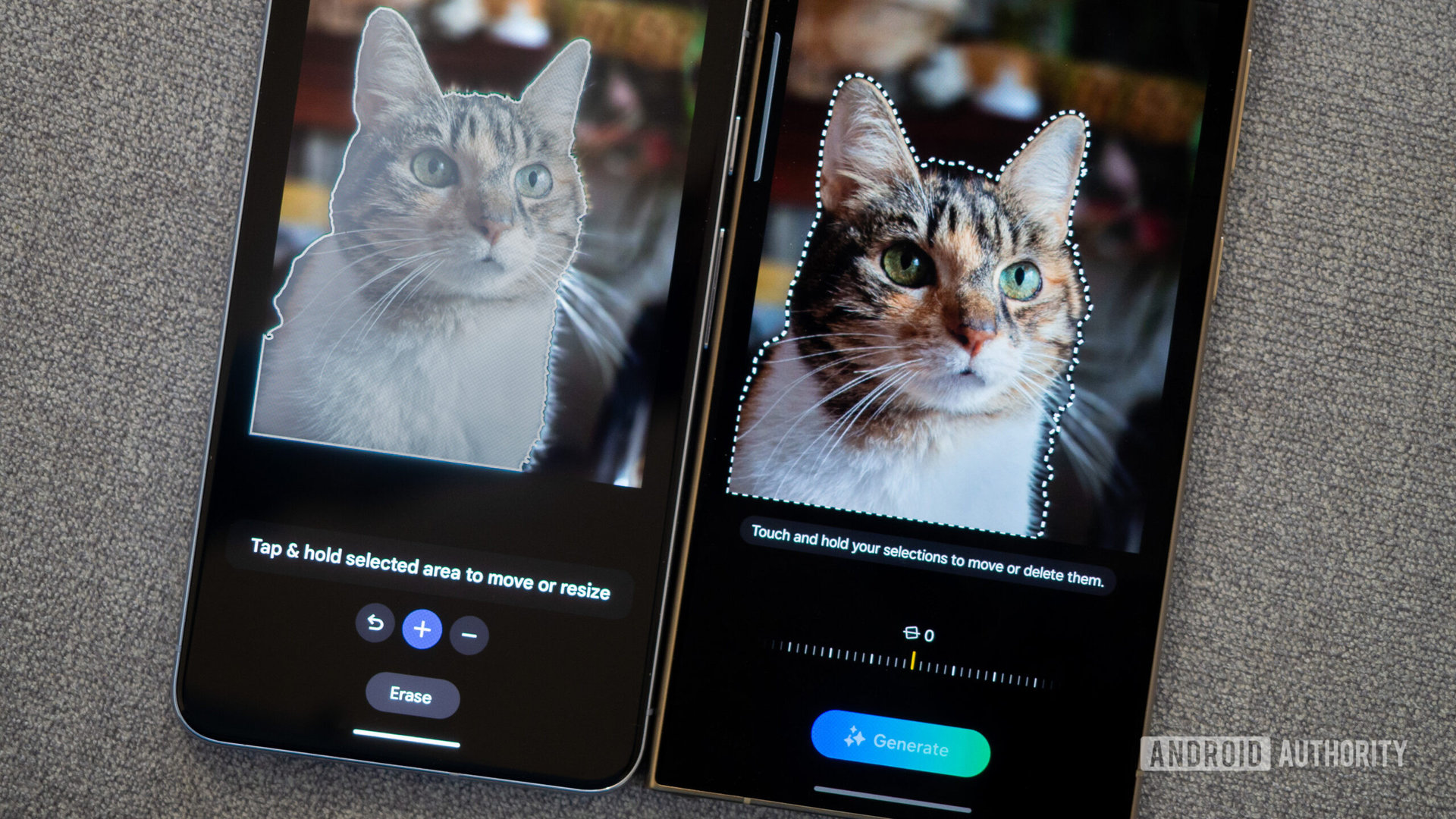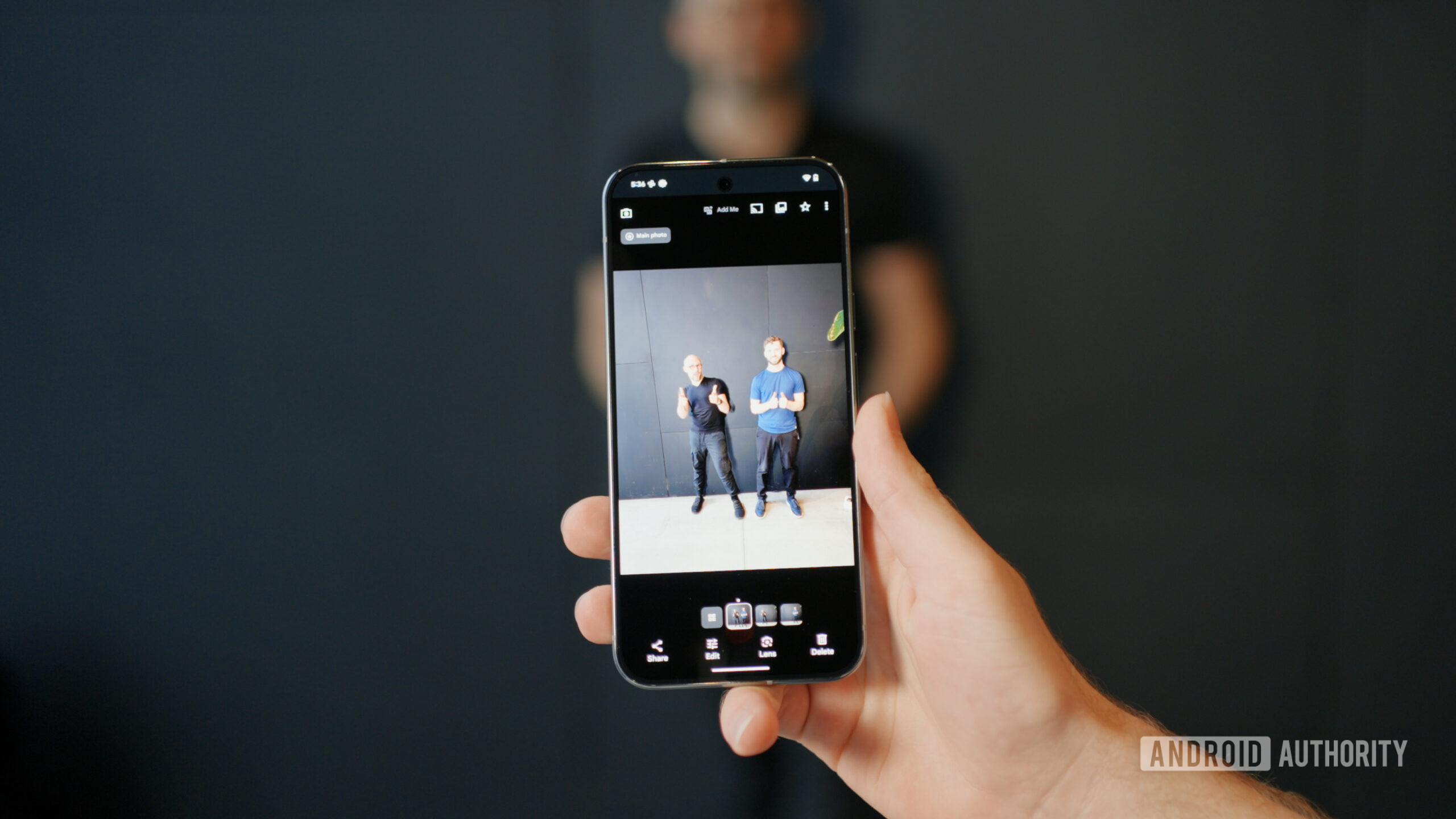Affiliate links on Android Authority may earn us a commission. Learn more.
As an amateur photographer, Google’s AI photo editing tools make me feel uncomfortable
August 17, 2024
More than a year ago, Google introduced Magic Editor, and some of us here at Android Authority were… discouraged. Us photo purists lamented the loss of authenticity and the dangers of quick-fix editing going mainstream. We aired our concerns about the potential of an AI-powered future. Now that the Google Pixel 9 is here with its bevy of new photo editing tools, that future has arrived, and I’m deeply uncomfortable.
Fake it till you indefinitely keep faking it

For full disclosure, I am an avid photography fan. I have a cabinet full of cameras and a coffee table laden with books by my favorite professional shooters. I even dressed up as Ansel Adams for history class in grade school. Nothing gives me as much joy as taking the perfect candid photo of a loved one.
The latest family of Google Pixel phones boasts some of the best camera specs in the business, and in theory, this means users can capture even more incredible, realistic images. Improved specs mean cataloging memories in greater detail and accuracy than ever, a win for photo enthusiasts and new moms everywhere. But before you can celebrate the cameras’ capabilities, Google hits you with on-device ways to modify the photos you grab, altering the captured reality before the proverbial ink even dries.
I never want to be a stick in the mud about technology, but photography is supposed to capture moments, not create false ones. Google’s latest launch encourages users to feel the exact opposite by expanding Magic Editor capabilities with new features like Auto-frame and Reimagine.
Photography is supposed to capture moments, not create false ones.
For me, Reimagine is the biggest offender. It allows users to type any prompt into the editor and completely change the background of a photo using generative AI. I thought previous tools that allowed you to reconfigure the subject or remove details were bad enough. While photo manipulation has always been possible (and probably more prevalent than I want to admit), there is a real danger of such extreme capabilities becoming mainstream.
Touch-ups are one thing, but a complete alteration of reality pains me to my core. With a few taps on a Pixel 9, I can now edit a photo and change my location, appearance, and even present company in minutes. Historically, we’ve relied on photo evidence; now, I can’t trust a single photo unless I personally know the source. This isn’t just about catfishing or false narratives; it is also about the nature of photography in general and the diminishing power of a photograph as truth.
A photograph is a snapshot of a moment in time. It’s never been a perfect reflection of reality; lighting, focus, and shutter speed, let alone saying “cheese,” are all modes of stylizing reality. With Google’s new tools, we can still snap a candid photo, hang it on our wall, and know it was real. Unfortunately, everyone else will have a kernel of doubt about its authenticity.
Does it matter if software fixes mean photos aren't real?
Auto-framing the moment

What’s more, many of us are inevitably getting worse at taking photos because it’s too easy to make do with bad ones. As crotchety as it sounds, this is one of the larger issues I have with AI-generated photo editing (and broad-stroke editing in general). Google’s latest, Auto-frame, now recomposes your photo according to best practices to emphasize the subject. It can even generate extra content to expand your image.
When film and development processes limited us, we took photos with a lot more intention. I genuinely feel that we are losing the art of framing moments. Even the rise of digital cameras made it more common to take a spray-and-pray approach (shoot a ton of pictures and hope one turns out well).
Easy fixes make for lazy photographers.
Now, we have the ability to take an excessive number of photos and the tools to modify them. I see the results of this in the photos friends and family members ask me to edit after their vacations or outings. It’s often a bystander they want removed, a distraction in the background, or something unseemly at the front of the frame. I don’t mind the ask, and I understand wanting images that match your idealized memories, but often, the edit could have been avoided by waiting for the stranger to pass or angling the camera away from the garbage can.
Likewise, I am frequently asked to do photo edits that need to be done to a high standard, for example, cleaning up wedding photos and preparing images for framed prints. Quick-fix tools create the misunderstanding that professional-level edits are equally simple. This is not the case, and relying on post-corrections shouldn’t be the standard expectation anyway. Again, the existence of one-click fixes leads to taking photos with less discipline and less regard for imperfections because they can simply be fixed later.
Please don’t add me

Another new feature Google is very excited to bring to Pixel users’ palms is Add Me, which combines back-to-back images of the same scenario so no one is left out of a group pic. In other words, you take a photo of two friends, then swap in, and the photos will automatically combine two takes into one image with everyone in the frame. Combined with Best Take, which Google introduced last year, this tool has the potential to streamline group photos.
As a deeply introverted human being, this feature is my personal nightmare. As mentioned, I love photography, but mostly, I love hiding behind the lens rather than posing in front of it. The idea that I can’t easily escape an impromptu photo op by simply offering to take the picture chills my bones.
To be fair, I do recognize the benefits of Add Me. My father, the family photographer, barely exists in our albums. I’ve also been on plenty of trips with friends where we spend the better part of an evening trying to jerry-rig someone’s phone on a mantel or chair to get a solid group photo. I just don’t love yet another way to fake a snapshot that never took place in reality. And I resent the added pressure to look presentable, just in case.

Excellent build quality, refined design
Extensive update policy

Excellent build quality
Flexible, capable cameras
Reliable update commitment

Gorgeous display
Seven years of software updates

8-inch folding display
Seven years of software updates
Thank you for being part of our community. Read our Comment Policy before posting.